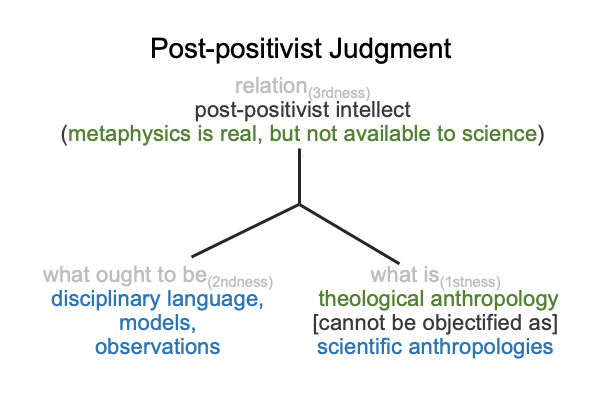Looking at Jeff Hardin’s Essay (2019) “Biology and Theological Anthropology” (Part 14 of 15)
0074 Jeff Hardin calls for theological interpretation of the Bible and scientific inquiry into human evolution to move in tandem.
In doing so, he unknowingly struggles with the Positivist judgment and offers us a post-Positivist alternative.
Here is a picture.

0075 If Hardin’s appeal prevails, then the metaphysics of the Bible offers a noumenon that supports phenomena studied in the human sciences.
Clearly, phenomena alone are insufficient to reveal our particular noumenon. How can changes in settlement patterns, innovation, and all the other little clues to the potentiation of unconstrained social complexity, produce a revelation that humanity is a recent creation by the divine?
Once the thing itself is intimated by the written origin stories of the ancient Near East, particularly the Biblical stories in Genesis, the human imagination may find a path to the hypothesis of the first singularity.
The noumenon, the thing itself, is necessary in order for there to be phenomena, observable and measurable facets. Yet, the noumenon cannot be objectified by its phenomena.
For centuries, empirical scientists ignore the noumenon and treat it as an impediment to their struggle for scientific results. That attitude continues to pervade the modern disciplines of anthropology, psychology and sociology. But, it cannot hold.
0076 Why?
Humans innately recognize noumena as sources of signification.
Our lineage adapts into the niche of triadic relations, which includes signs, mediations, judgments and category-based nested forms.
0077 Then, our Lebenswelt changes. We forget who we were. We fashion fairy tales of who we are. These fairy tales include public mythologies of the ancient Near East, written in cuneiform on clay tablets that are preserved in burnt ruins of long forgotten capitals. These public mythologies agree with the stories of Adam and Eve in the Bible. Humans are recently manufactured by the spiritual realm.
Here is a noumenon that cannot be objectified by its phenomena.
Yet, phenomena exist only because of their noumenon.
The noumenon and its phenomena both point to a recent prehistoric change from the Lebenswelt that we evolved in to our current Lebenswelt.
0078 The rule of the positivist intellect cannot contain the human sciences.
Theology and the human sciences must move in tandem.

